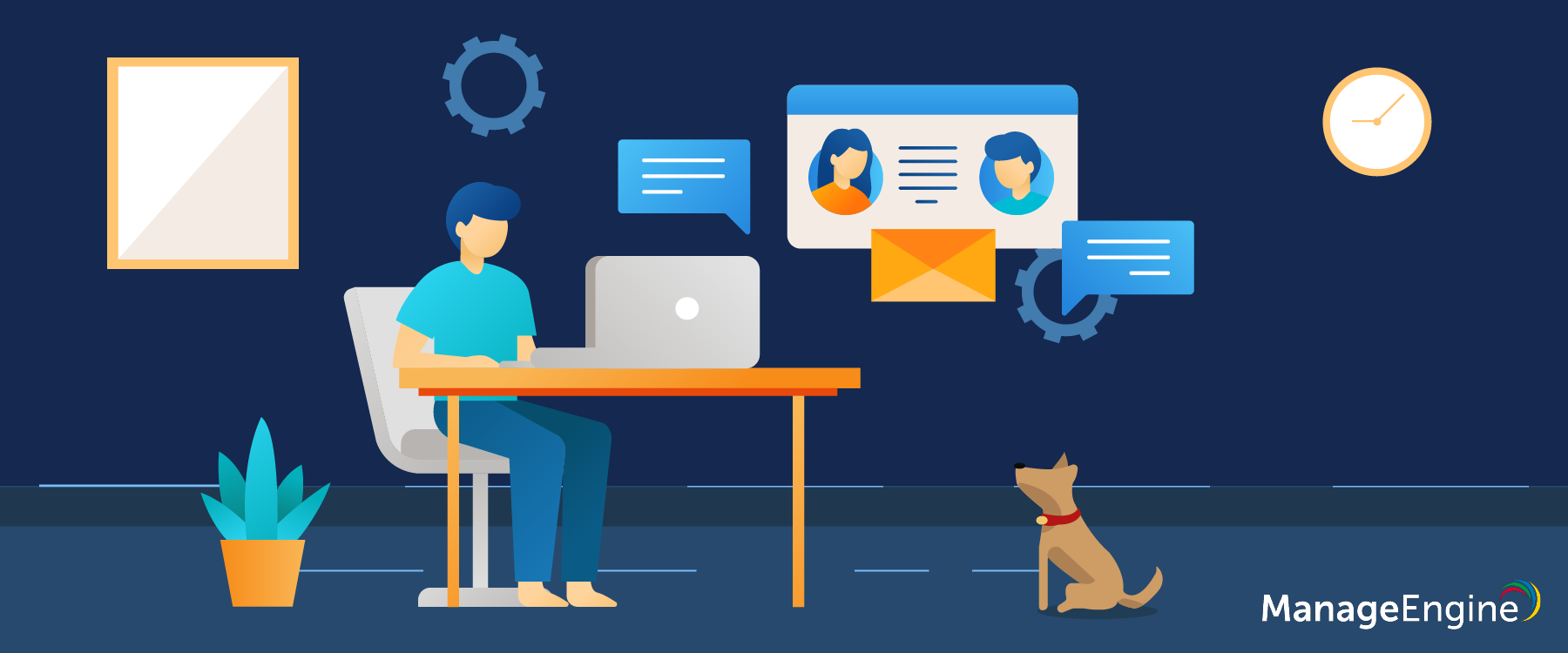Remote work: Governing and guiding end users
 With remote work being the new normal thanks to the ongoing pandemic, enterprises are facing the dilemma of how to update and secure all their network endpoints while managing devices efficiently.
With remote work being the new normal thanks to the ongoing pandemic, enterprises are facing the dilemma of how to update and secure all their network endpoints while managing devices efficiently.
Many businesses have adapted their operations to a remote work model. As a result, the increase in individuals working from home has put pressure on IT staff, the infrastructure, and security operations absorbing the extra burden.
Effective security and productivity measures need to be taken while keeping in mind that endpoints may not always be connected to the corporate network via VPN or proxy.
According to a recent study conducted by Gartner, "By 2030, the demand for remote work will increase by 30 percent." While this may be welcome news for some, for IT admins, it presents the challenge of patching these remote endpoints.
In a complete on-premise environment, when a patch is released, IT admins will patch all the machines connected in the network on their preferred schedules. They'll probably choose a patch deployment duration based on the machine or device being updated and the time of day (whether it's a productive business hour or after hours). This is because some critical patches might require a reboot or shutdown.
ManageEngine Desktop Central offers complete patching of Windows, Mac, and Linux endpoints along with third-party applications. With Desktop Central's patch management feature, you can completely automate the deployment of critical patches.
Whether it's and on-premises or a remote work environment, the first thing you need to do is create a configuration customizing patch deployment. The next step is to create a deployment task to schedule the deployment of the updates as and when required. The third and final step is to associate this deployment policy with the patch configuration, and select your target machines for deployment.
When it comes to remote patching and updating, IT admins need to consider some additional questions to ensure patches and updates are completed, and devices are functioning smoothly:
1. Will the device be connected to the corporate network?
2. Will this patch download hinder any of the end user's other activities?
3. Does the end user have enough bandwidth to download all the files required for patching?
4. Can the machine be rebooted if needed after the patch is deployed?
5. Can I acquire complete control over the end user's device during this process?
With ManageEngine Desktop Central's simple yet powerful features, you'll easily find answers to all these questions .
Using Desktop Central, you can send out instant alerts to your end-user machines regarding patch deployment details. For example, if a patch is scheduled to be deployed to your endpoints at the end of the week after your regular productive hours, you can send an alert to notify end users ahead of time to remind them to stay connected to the corporate network during the deployment period.
Also, during this deployment period, you should remind end users to avoid scheduling any meetings or calls to prevent bandwidth constraints. Similarly, when installing new applications running as large as 2GB or more in your end users' machines, you can broadcast the information and the time at which the package will be deployed. This will help users plan accordingly.
In case end users face any issues, they can reach the IT admins via the help desk, so that any issues that pop up regarding patch or software updates can be immediately sorted out. To investigate issues further, IT admins can take remote control of the device and troubleshoot instantly using Desktop Central.
Even critical tasks like securing your network endpoints via patching can be done easily using Desktop Central. Click here to learn more about Desktop Central and how it can help users in a work-from-home environment.